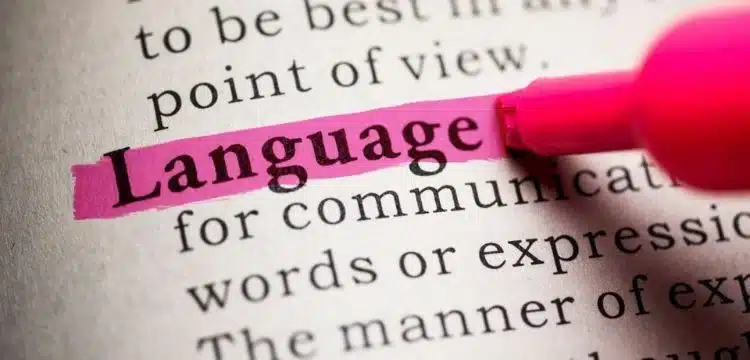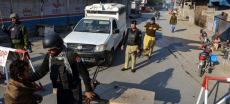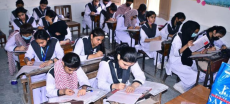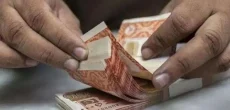[vc_row][vc_column][vc_column_text dp_text_size=”size-4″]
Pakistan stands as a testament to linguistic diversity, its cultural tapestry interwoven with numerous languages that echo its rich history and heritage. The country, located at the crossroads of South Asia, Central Asia, and the Middle East, has become a melting pot of ethnic groups, each contributing to the linguistic landscape. This blog post delves into the linguistic diversity of Pakistan, exploring the number of languages spoken, their origins, and their significance in the socio-cultural fabric of the nation.
The Linguistic Landscape of Pakistan
Pakistan is home to a wide array of languages, reflecting the country’s complex history and the myriad of cultures that have thrived within its borders. The languages spoken in Pakistan can be broadly classified into several language families, including Indo-Aryan, Dravidian, Iranian, Turkic, and various smaller language groups.
Famous Languages Spoken in Pakistan
Urdu: The National Language
Urdu holds a special place in Pakistan’s linguistic and cultural landscape as the national language. It is a symbol of unity for the country’s diverse population, serving as a lingua franca that bridges the gap between the numerous ethnic and linguistic groups. Urdu’s rich literary tradition, with its poetry and prose, plays a pivotal role in the cultural and educational spheres of Pakistan. Despite being the mother tongue of only a small percentage of the population, its widespread use in media, education, and official settings underscores its importance.
Punjabi: The Vibrant Voice of the Punjab
Punjabi, the most spoken language in Pakistan, is the vibrant voice of the Punjab province. It is celebrated for its lively music, folk stories, and poetry. Punjabi culture is renowned for its warmth and hospitality, aspects deeply intertwined with the language itself. Despite its widespread use, Punjabi has not received official status in Pakistan, leading to concerns about its preservation among language activists. However, it continues to thrive in rural and urban areas, and through media and arts.
Sindhi: The Ancient Echoes of Sindh
Sindhi, with its rich historical background, is the predominant language of the Sindh province. It stands out for its ancient script and literary heritage, which dates back to the 16th century. Sindhi culture is marked by its Sufi traditions, festivals, and folk tales, all of which are deeply embedded in the language. The government of Sindh has taken steps to promote Sindhi through education and media, ensuring its vibrant presence in the cultural fabric of the region.
Pashto: The Melodic Language of the Pashtuns
Pashto is the language of the Pashtuns, primarily spoken in Khyber Pakhtunkhwa and parts of Balochistan. Known for its melodic quality and poetic forms, Pashto has a strong oral tradition with famous works of poetry that date back centuries. Pashto speakers have a profound connection to their language, which is seen as a marker of ethnic identity and pride. The language enjoys considerable support in its regions, with media outlets and educational institutions promoting its use.
Balochi: The Desert Tongue
Balochi, the language of the Baloch people, resonates with the arid landscapes of Balochistan. It reflects the nomadic heritage and the rugged resilience of its speakers. Balochi poetry and music, with their themes of love, war, and the beauty of the land, are crucial to the cultural expression of the Baloch people. Efforts to document and promote Balochi are ongoing, as it faces challenges related to its preservation and development.
Saraiki: The Sweet Language of the South
Saraiki, spoken in the southern regions of Punjab, is known for its sweetness and melodic quality. It has a distinct identity and culture, with a rich tradition of poetry and music. Saraiki speakers advocate for recognition and preservation of their language, seeking greater representation in the media and education. The language’s gentle tone is celebrated in the folk songs and stories that are passed down through generations.
Shina: The Mountain Whisper
Shina is the language of the people in Gilgit-Baltistan, echoing through the mountain valleys of northern Pakistan. It is known for its variety of dialects, reflecting the diverse communities that speak it. Shina folklore is rich with tales of mountains, rivers, and heroes, capturing the essence of the landscape and the spirit of its people. Efforts to preserve Shina include documentation projects and cultural festivals that celebrate its heritage.
Brahui: The Dravidian Enigma
Brahui stands out as a linguistic enigma in Pakistan, being a Dravidian language surrounded by Indo-Iranian tongues. Spoken in central parts of Balochistan, it has retained its distinct identity despite the influences of neighboring languages. The Brahui-speaking community maintains a strong cultural heritage, with traditions and social structures that are closely linked to the language.
Hindko: The Voice of the North-West
Hindko is primarily spoken in the Hazara region of Khyber Pakhtunkhwa and in parts of Punjab. It serves as a bridge between the Indo-Aryan and Iranian language families, reflecting the historical migrations and cultural exchanges in the region. Hindko speakers cherish their language’s literary and cultural traditions, with efforts underway to promote its use in education and media.
Khowar: The Language of Chitral
Khowar, spoken in the Chitral district, is known for its poetic beauty and the rich cultural landscape it represents. It is the lingua franca of Chitral, encompassing a variety of dialects and influences from neighboring languages. Khowar poetry and music are integral to the cultural celebrations and daily life in Chitral, with initiatives aimed at preserving and promoting the language among the younger generations.
Kashmiri: The Melody of the Vale
Kashmiri, though primarily associated with the Indian-administered region of Kashmir, is also spoken in parts of Azad Kashmir in Pakistan. It is known for its lyrical quality and the rich literary tradition that includes poetry, folklore, and drama. The language reflects the beauty and the tumultuous history of the Kashmir Valley, with efforts in Pakistan focused on preserving Kashmiri culture and language among the diaspora.
Official Languages
Urdu and English are the official languages of Pakistan. Urdu, rich in literary tradition, serves as a lingua franca, enabling communication across different linguistic groups. English, a remnant of the colonial past, is used in government, legal affairs, and higher education.
Minor and Endangered Languages
Beyond the more dominant languages, Pakistan is home to numerous minor and endangered languages. These languages, often spoken by small communities, are an integral part of the country’s cultural diversity. They include Torwali, Kalasha, Khowar, and Brahui, among others. The preservation of these languages is crucial for maintaining cultural diversity and heritage.
The Number of Languages Spoken
It is estimated that over 70 languages are spoken in Pakistan. This number includes major regional languages, minor languages, and dialects that vary significantly from region to region. The exact number can be challenging to determine due to the dynamic nature of language development, dialectal variations, and the lack of comprehensive linguistic surveys in certain areas.
The Role of Languages in Society
Languages in Pakistan do more than facilitate communication; they are deeply intertwined with cultural identities, traditions, and social practices. Each language carries its own history, literature, poetry, and music, contributing to the cultural richness of the nation. Language festivals, literary gatherings, and cultural events are commonplace, celebrating the linguistic diversity of Pakistan.
Challenges and Preservation Efforts
Despite the rich linguistic landscape, many languages in Pakistan face challenges, including declining numbers of speakers and limited presence in education and media. Efforts to preserve and promote these languages are underway, involving governmental initiatives, academic research, and community-based projects aimed at revitalizing endangered languages and promoting linguistic diversity.
Conclusion:
The linguistic diversity of Pakistan is a testament to its rich cultural heritage and history. With over 70 languages spoken across the country, Pakistan’s linguistic landscape offers a fascinating glimpse into the complexities of cultural identity and communication. The preservation of these languages is crucial for maintaining the cultural richness and diversity of the nation. As Pakistan continues to evolve, the languages spoken within its borders will remain an integral part of its identity, reflecting the myriad of cultures that make up this vibrant country.
FAQs
How many languages are spoken in Pakistan?
Pakistan is home to over 70 languages, reflecting its rich cultural and ethnic diversity.
What is the national language of Pakistan?
Urdu is the national language of Pakistan, serving as a lingua franca across the country.
Are there any official languages in Pakistan other than Urdu?
Yes, English is also an official language of Pakistan, widely used in government, law, and education.
Which language is most widely spoken in Pakistan?
Punjabi is the most widely spoken language in Pakistan, primarily in the Punjab province.
Can you name some regional languages of Pakistan?
Some of the regional languages include Sindhi, Pashto, Balochi, and Saraiki.
Is there any effort to preserve endangered languages in Pakistan?
Yes, there are efforts by cultural organizations, academic institutions, and government bodies to document and preserve endangered languages in Pakistan.
Do languages in Pakistan vary significantly across regions?
Yes, languages in Pakistan vary significantly, with each region having its own predominant language or dialect that reflects its unique cultural identity.
How does the government of Pakistan promote linguistic diversity?
The government promotes linguistic diversity through education policies, media broadcasting in various languages, and cultural festivals celebrating different linguistic heritages.
Are there languages in Pakistan that are considered endangered?
Yes, several languages in Pakistan are considered endangered due to declining numbers of speakers, including some minor dialects and languages spoken in remote areas.
What role do languages play in Pakistan’s cultural identity?
Languages play a crucial role in shaping Pakistan’s cultural identity, serving as vehicles for expressing the country’s rich literary, musical, and artistic traditions.
[/vc_column_text][/vc_column][/vc_row]











